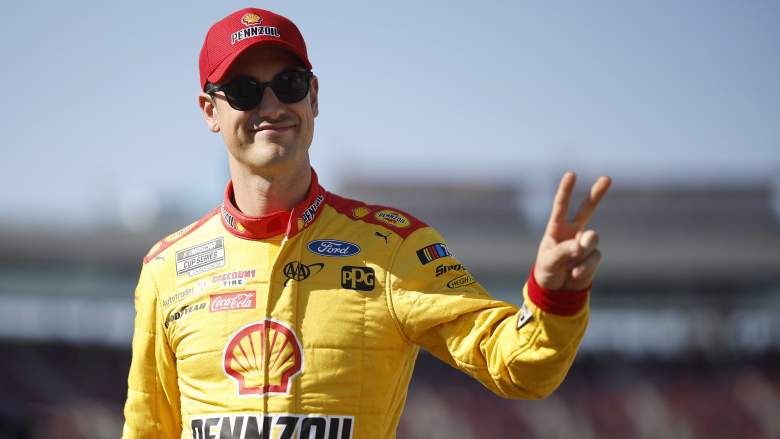
Getty Images Joey Logano teaches Ferrari F1 drivers about the grind of NASCAR Cup Series racing
NASCAR Cup Series driver Joey Logano took pole for the Daytona 500 on February 18, the first for the No. 22 Ford driver. Logano just beat out Michael McDowell in qualifying, earning Team Penske its first ever Daytona 500 pole. Logano’s pole for the 66th running of the Great American Race ended Hendrick Motorsport’s streak of nine consecutive Daytona 500 poles.
But it wasn’t all work for Logano. Before the qualifying, the typically fiery Logano had a surprisingly pleasant sit-down with Ferrari’s F1 racers, Charles Leclerc and Carlos Sainz.
So Many NASCAR Cup Series Races!
In a video posted by Shell Motorsport, sponsors of Logano and the Ferrari team, the three men play cards and talk up their sport’s differences — and similarities. The mutual respect they have for each other is apparent.
The video makes for some fun observations about the Ferrari drivers’ repeated surprise by the demands NASCAR races put on drivers.
In the video, Leclerc and Sainz say they are shocked there is only a 10-minute break between practice and qualifying in NASCAR because in F1, practice is typically on Friday and Saturday morning, with qualifying hours later on Saturday afternoon.
The next big surprise — with Logano leading the discussion — is over the number of races. The Ferarri F1 drivers can hardly believe there are 38 (and counting) NASCAR races per year. There are 24 F1 races scheduled in 2024 — a record number. Logano notes, though, that F1 races across five continents and multiple time zones.
The three men also discuss some of the physical differences driving for NASCAR versus F1. Logano says NASCAR drivers don’t really take the G forces that F1 racers experience. NASCAR drivers, however, are on the track racing for over 3 hours. An F1 race is barely 2 hours, by comparison.
“Three hours and a half on a half-a-mile track, going left” seems shockingly difficult to Leclerc. It’s a funny moment.
Just as surprising to the Ferrari drivers — and maybe a shock for NASCAR fans — is that NASCAR drivers are in “constant” communication with their spotters. First, Logano has to let them know what a spotter is, then let them know that the constant communication is for the best.
‘Three and a Half Hours, Going Left’
Leclerc seems genuinely interested in the number of oval courses NASCAR runs on. In F1, most races are on purpose-built tracks, with some street courses. Logano explains the reliance on oval courses, noting that both NASCAR and F1 race in Austin, at the Circuit of the Americas (COTA). The F1 drivers say that oval courses seem “super difficult” to them. For Logano, this is less about technical ability than the fact that NASCAR drivers are so used to oval courses that it’s not as difficult as the Ferrari drivers imagine.
Leclerc seems as interested in the speed of NASCAR cars as the differences between the car. At COTA, where both cars race, F1 bests NASCAR on overall speed — with lap times of 1:34 versus NASCAR’s 2:30. Though, both he and Sainz appear surprised by how fast NASCAR cars are going when wide open on ovals — about 320kmh (200mph). “That is fast,” Leclerc says.
Logano seems genuinely happy to talk about the different features of his car, and how these are used to both help increase speed — and prevent the car from basically flying. The trio talk other differences between their respective sports. F1 cars do not refuel during a race. F1 cars can be significantly different from one another, which isn’t so with NASCAR.
The drivers don’t get much card playing in, but they do have a good time.